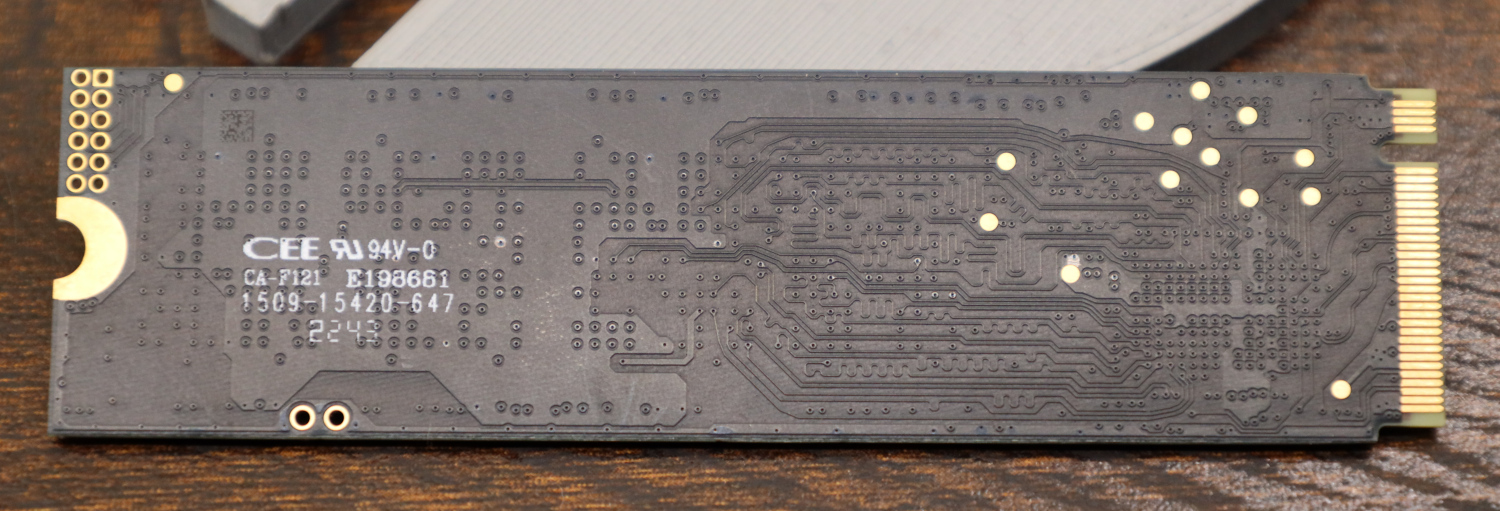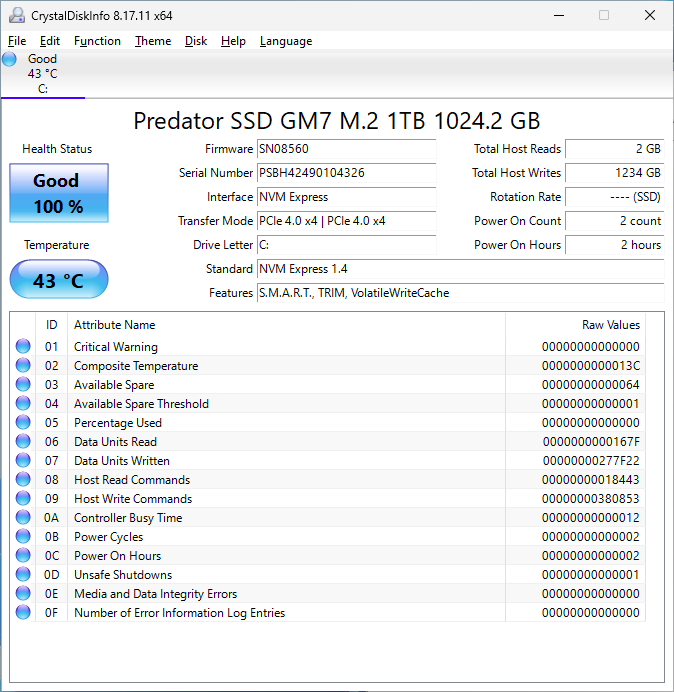Today we are looking at the Predator GM7 1TB SSD. The Predator GM7 is sort of the little-brother to the GM7000 that we previously reviewed. The key difference between the two is the GM7 is a DRAM-less design, which saves on cost. I only have a 1TB GM7 for review, so I will not be comparing it to the 4TB GM7000 that I covered last year, but instead will pit the GM7 against other contemporary 1TB drives.
And once again, I want to have a little preface on the Predator branding. Predator SSDs are manufactured by Biwin, which some of our readers might recognize as the manufacturing partner behind the HP-branded SSDs like the HP FX900 Pro. Acer manufactures computer equipment under the Predator branding as well, but with the SSDs under the Predator name there is no involvement from Acer and the drives are entirely Biwin’s creation. Despite this, sales listings for Predator drives often contain the Acer name.
Predator GM7 1TB NVMe SSD
The Predator GM7 1TB comes in a single-sided M.2 2280 (80mm) form factor.

The Predator GM7 uses a Maxio MAP1602 controller, and this is my first experience with this chip. Other reviews have listed the NAND as being YMTC 232-layer TLC, but prior to my receiving of my review sample I was informed that this was not correct. My contact at Biwin would not disclose the exact technology behind the NAND, other than to explicitly state that “the NAND Flash used in GM7 is NOT based on 232-layer NAND Flash.” Our readers can make of that what they will.
Regardless, the Maxio controller is easy enough to confirm and there is no DRAM cache, so that is all of the important components on the drive.

The back of the GM7000 is basically blank, as one would expect from a single-sided drive.
Predator GM7 SSD Specs
The GM7 line of SSDs is available in sizes between 512 GB and 2 TB.

The Predator GM7 we have today is the 1TB model, which sits in the middle of the product stack. Sequential read speed is quoted at 7200 MB/s, with write speed at 6300 MB/s, which are pretty good specs for a a PCIe Gen4 drive, and especially so for a DRAM-less design.
Endurance is rated at 600 TBW, which is satisfactory for a 1TB drive. The warranty is the industry-standard 5 years for a premium drive as well, which is good to see.

CrystalDiskInfo can give us some basic information about the SSD and confirms we are operating at PCIe 4.0 x4 speeds using NVMe 1.4. Additionally, this is a 1024 GB drive and not a 1000 GB unit, which represents a bit of extra capacity for the user.
Test System Configuration
We are using the following configuration for this test:
- Motherboard: ASRock X670E Steel Legend
- CPU: AMD Ryzen 9 7900X (12C/24T)
- RAM: 2x 16GB DDR5-6000 UDIMMs
Our testing uses the Predator GM7 1TB as the boot drive for the system, installed in the M.2_1 slot on the motherboard. This slot supports up to PCIe Gen 5 x4. The drive is filled to 85% capacity with data, and then some is deleted, leaving around 60% used space on the volume.
Next, we are going to get into our performance testing.




1tb = $70 on amazon
Since when is “Voltage” measured in Watts?
I agree, the specifications table should replace “Voltage” with “Power Consumption” or something similar.
altmind, the $70 drive is the GM7000 which is a different model.
Josef and mariush,
I agree! But I didn’t make the specs table; comes right from the Predator website.
How relevant is DRAM cache for a Linux system that uses F2FS ?
gm7 1tb 379cny = 55$ on taobao(china marketplace), better buy pm9a1(980 pro samsung) 1tb for 409cny = 60$
I checked the specifications about Predator GM7 on the website predatorstorage.com here, totally agree, the specifications table should replace “Voltage” with “Power Consumption” ,It would be more accurate.
Not bad item, A good review for Predator GM7, but Can’t agree any more, the specifications table can replace “Voltage” with “Power Consumption” ,It would be a bit accurate.
1tb = $70 on amazon, sure?
1tb 379cny = 65$ on taobao(china marketplace),this is reasonable
weird, yours is 1.4 standards while current has 2.0